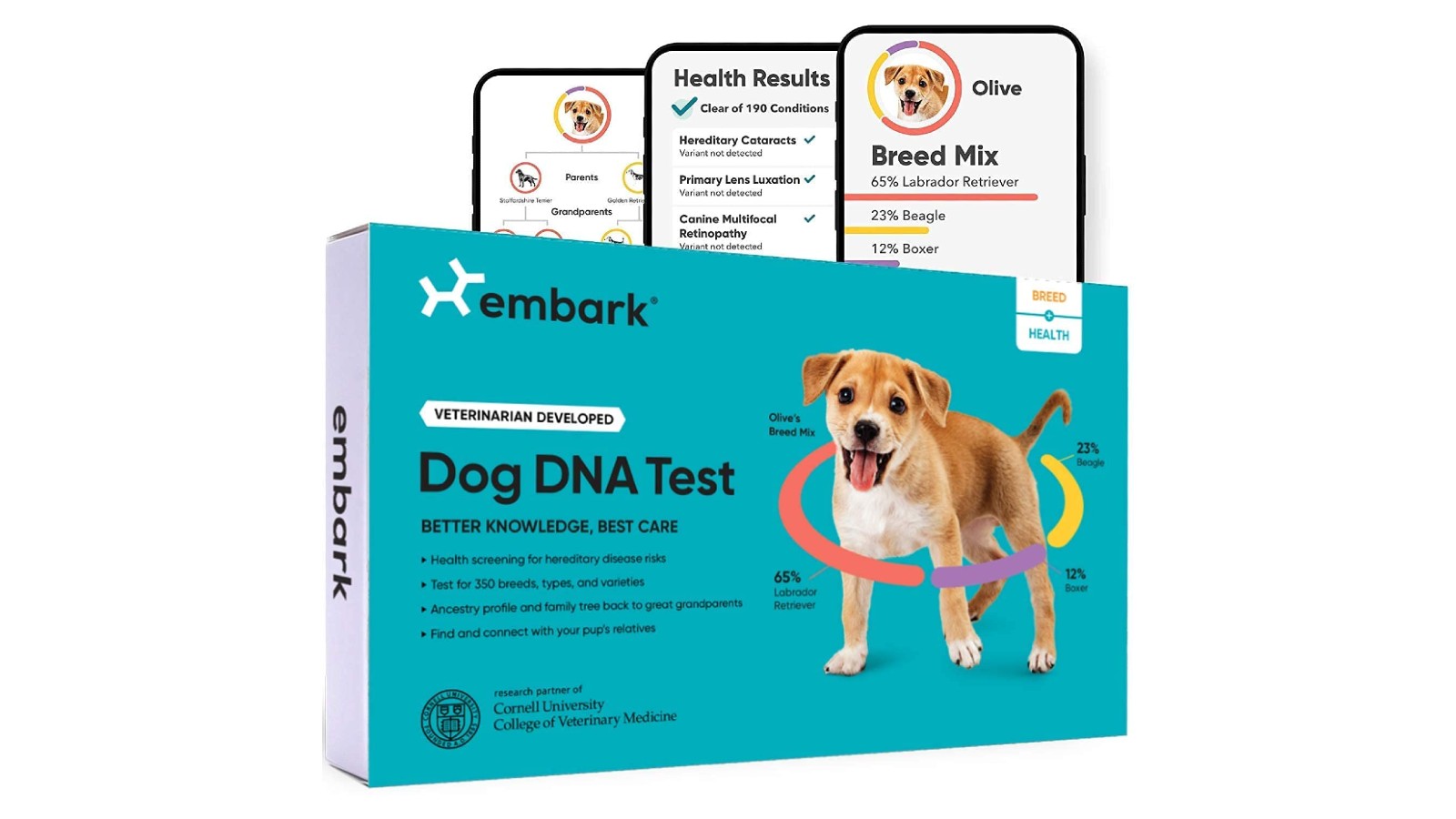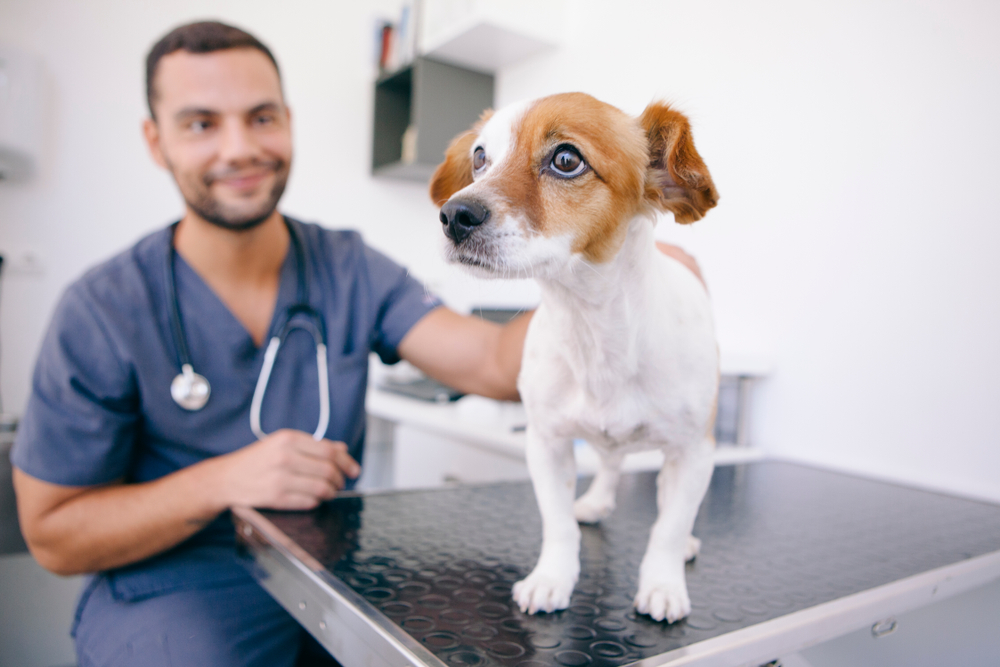Dog DNA tests: How accurate are they, and what can you learn?
Of the many dog DNA tests on the market, which one is right for you and your pet? How do they work, are they accurate, and what can you learn?

For the genealogically curious, DNA tests are increasingly popular as holiday gifts, and this is not just limited to test kits for humans: Dog DNA tests are now available to give you insights into your pooch's genetic makeup.
While genetic testing for human ancestry and disorders has been around for several years, dog DNA tests that can identify the breed of your four-legged-friend have appeared relatively recently. So, should pet owners invest their hard-earned money in a dog DNA test, and what can they actually reveal?
- Check out more DNA test deals this Black Friday
How much are dog DNA tests?
For starters, genetic testing for dogs is not exactly cheap. Embark is a big name in canine DNA testing, and their offering on Amazon starts at $129 — this test kit that offers breed identification, but no genetic disorder screening.
This Black Friday you can save 32% on an Embark test kit that handles both breed ID and screens for more than 210 genetic disorders. Usually priced at $199, this is available now for $135 on Amazon.
Wisdom Panel has three test offerings available to interested consumers. Its cheapest offering starts at $99.95 on Amazon for a basic breed-detection test that also screens for a handful of common genetic disorders.

Their most expensive offering comes in at $159.99 and not only offers breed detection, but also screens for more than 200 genetic conditions and offers a free veterinary consultation in the event the test results indicate anything concerning.
Orivet has tests that start at $129, and the thing that sets them apart from the others seems to be their offering of tests for health problems in specific breeds.
Of the canine DNA tests, the offerings are rather similar to one another. Your choice might come down to either price or your particular interests, like purebred genetic diversity or identifying your dog’s genetic relatives.
What does a dog DNA test tell you?
Dog DNA tests "look for markers in the DNA and compare them with a database of DNA taken from dogs with confirmed pedigree," Sergio Pistoi, a molecular biologist and author of "DNA Nation" (Crux Publishing, 2019) told Live Science in an email.
From there, these companies use an algorithm that looks at the number and types of these genetic markers and determines your dog’s breed makeup. Pistoi says that this is rather similar to how human DNA tests analyze ancestry, but with one key difference. "While animal breeds are artificially created and maintained by crossing individuals with certain features, there is no such thing as genetically distinct human races."
Related: How do DNA ancestry tests really work?
Depending on the test you buy, you can screen for a number of genetic disorders. Just like humans can be at risk for congenital conditions, dogs are no strangers to genetic disorders. So, while the owner of a purebred dog might not feel the need to confirm their pet's breed, they might still be interested in screening for common genetic conditions.

"A pedigreed dog is not necessarily less healthy than a mongrel, but it’s true that some congenital disorders are more frequent in purebreds," Pistoi wrote. One of the biggest reasons for this has to do with inbreeding. Over time, as dog breeders bred dogs to accentuate favorable traits, they often would breed those dogs with close relatives. This, in effect, makes purebred dogs more genetically consistent, but it also means that harmful mutations can tag along with these traits.
"Think of genes as a deck of cards that are shuffled and passed on through the generations. Inbreeding limits the number of cards (genes) in the deck, meaning that a bad hand, such as a mutation in a common ancestor, will be passed on more frequently to the offspring," writes Pistoi.
Related: How to protect your DNA data
This means that each breed has certain genetic conditions they are at an elevated risk for. Various cancers with genetic causes are common in Golden Retrievers, Sick Sinus Syndrome is common in Silver Schnauzers, and mitral valve disease is common in King Charles Spaniels, just to name a few.
Aside from breed identity and congenital conditions, some tests will offer predictions as to the color and texture of your animal’s fur as well as other traits controlled by genes. "One company can even extract the DNA from the remains or toys of a deceased dog and determine its breed," writes Pistoi. “Why you would do that is the real scientific mystery, I think."
Are dog DNA tests accurate?
Most dog DNA test kits will contain a cotton swab that can be used to collect a sample of your pet’s saliva. This sample can be packaged into a tube for shipping. Once it arrives at the lab, a technician will extract and amplify the DNA from the sample for analysis.
The technology behind genetic tests for dogs is identical, regardless of the test you buy, says Greg Burns, assistant professor in small animal reproduction at Colorado State University. In fact, he says, the tests available to consumers now are identical to the tests veterinarians have been using for the last 15 years. The difference is that they are available directly to the consumer.
“The analysis is based on miniature biochips – called microarrays – that react with the DNA sample and can detect thousands, or even millions, of genetic markers at once,” writes Pistoi.
Related: How accurate are DNA tests?
Theoretically, the more genetic markers a test searches for, the more reliable it will be. When considering various genetic tests, the amount of markers the test looks for is an important thing to consider. Of the two biggest testing companies, Embark claims its tests scan for over 200,000 genetic markers, while Wisdom Panel claims to have the most comprehensive reference database.
The manufacturers of these DNA tests claim over 90% accuracy (Embark doesn’t mention a number while Wisdom Panel claims >98% accuracy), but given that these tests are not independently verified, it is unclear exactly what these numbers may mean.
However, the technology underlying DNA tests for dogs is identical to DNA tests for humans, with the exception that the microarray chips are adapted to the canine genome.
Once the DNA is read, it is, "compared with the reference database for breed identifications or used to find markers that signal disease mutations," according to Pistoi.

As far as accuracy goes, Burns says they are "very accurate, although the tests for disorders are more reliable (in my experience) than those for breed identification." This is because many of the disorders the tests screen for are related to specific, easily identifiable mutations.
The big difference between doing an at-home genetic test and performing one through your veterinarian’s office is having a veterinarian to interpret the data, said Burns.
These tests, he said, were originally verified in purebred dogs. While the tests are very good at detecting certain genetic variants that might cause congenital conditions, it’s also important to consider how those mutations might interact with other genes the dog has.
"French Bulldogs and Corgis, for example, there’s a reason they look like that," said Burns. Essentially, if a mixed-breed dog carries a genetic disorder common in either of those breeds, but doesn’t have many of the physical traits that characterize those breeds, then they might not be affected by the disorder in the same way the purebred animals are.
Additional resources
- "DNA Nation" (Crux Publishing, 2019) by Sergio Pistoi reveals everything you need to know about DNA testing, and how it is changing society.
- MedLine Plus provides information on contacting a genetics professional in your area.
- Find out what Live Science contributor Rafi Letzter discovered when he took 9 different DNA test kits.
Sign up for the Live Science daily newsletter now
Get the world’s most fascinating discoveries delivered straight to your inbox.

Cameron Duke is a contributing writer for Live Science who mainly covers life sciences. He also writes for New Scientist as well as MinuteEarth and Discovery's Curiosity Daily Podcast. He holds a master's degree in animal behavior from Western Carolina University and is an adjunct instructor at the University of Northern Colorado, teaching biology.










